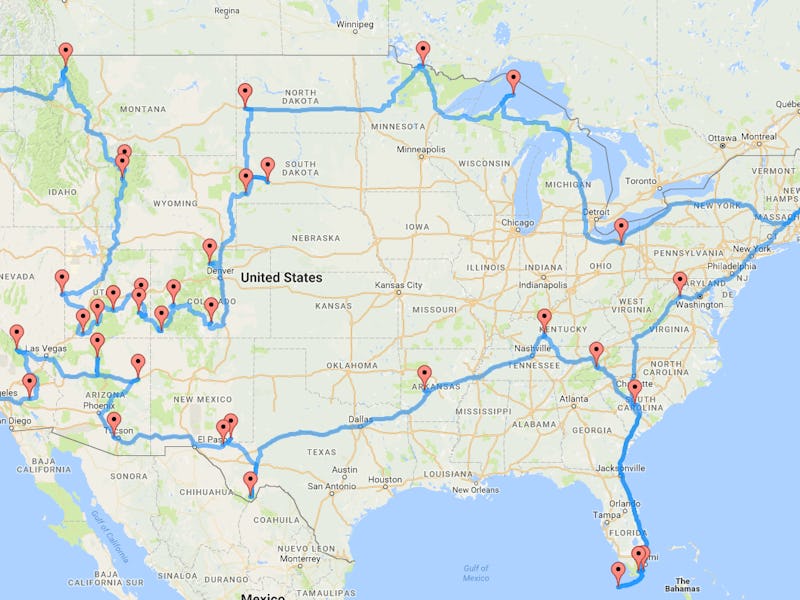This Guy Determined the Optimal Map for Visiting National Parks
Visit some of the most beautiful scenes in the United States.

Summer is here, and with it, talk begins of going on a giant road trip around the United States. Of course, once you’ve found time off work and scraped the money together, there’s still the planning left to do. But fear not! In celebration of the 100th anniversary of the National Park Service, one man has used science to try and find one of the best road trips.
Randy Olson, a researcher at the University of Pennsylvania, has calculated a route that visits all 47 national parks in the 48 contiguous states. It covers some of the most gorgeous sites found in North America: the Grand Canyon, Death Valley, the Everglades, and the Rocky Mountains all make an appearance. In all, the trip spans 14,498 miles and, by Olsen’s estimations, would take about two months to complete.
Olson ensured the route would form a complete circle around the contiguous U.S. That means trip planners can hop on and off at any point along the route. Assuming you stick to the plan once you hop on, you’ll save time and ensure you don’t miss some of the finest parks the U.S. has to offer.
Here is the end result:
There are plenty of parks left off the list, though. Olsen ignored the 12 parks in Alaska and Hawaii, as they’re more difficult to get to without a car going into the ocean … or crossing into (gasp) Canada. The route also ignores national monuments, which are created by presidential proclamation rather than acts of Congress.
Olsen used the Gurobi TSP solver to complete his map. TSP stands for Traveling Salesman Problem, a centuries-old problem that asks the question of what the best route would be for a traveling salesman. It’s assumed the salesman needs to visit every point on a map once and end up at the original location. The problem is that simply picking the closest point to the start, then moving to the next closest point and so on, doesn’t normally give you the shortest route.
There are multiple TSP solvers, but the one Olsen has chosen uses a Python API to make the more difficult solutions a little easier. If you can’t program in Python, or can but have interest in using your skills, Olsen advises road trippers to try RouteXL.
Tourists walk at Dante's View on May 23, 2014 in Death Valley California.
If natural beauty isn’t so much your thing, you may want to look at Olsen’s other map, also calculated using Python. That map instead focuses on visiting every state in the lower 48. Thanks to computers, you really have no excuse now to postpone planning that trip.